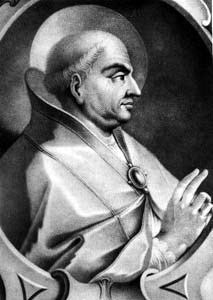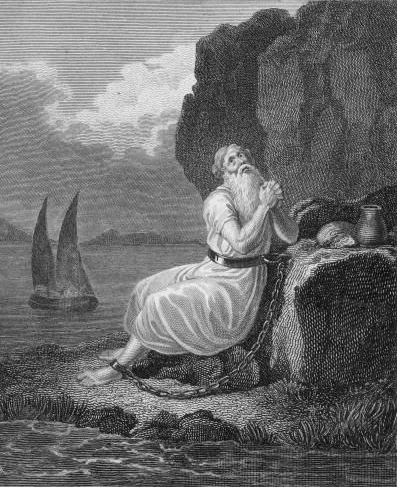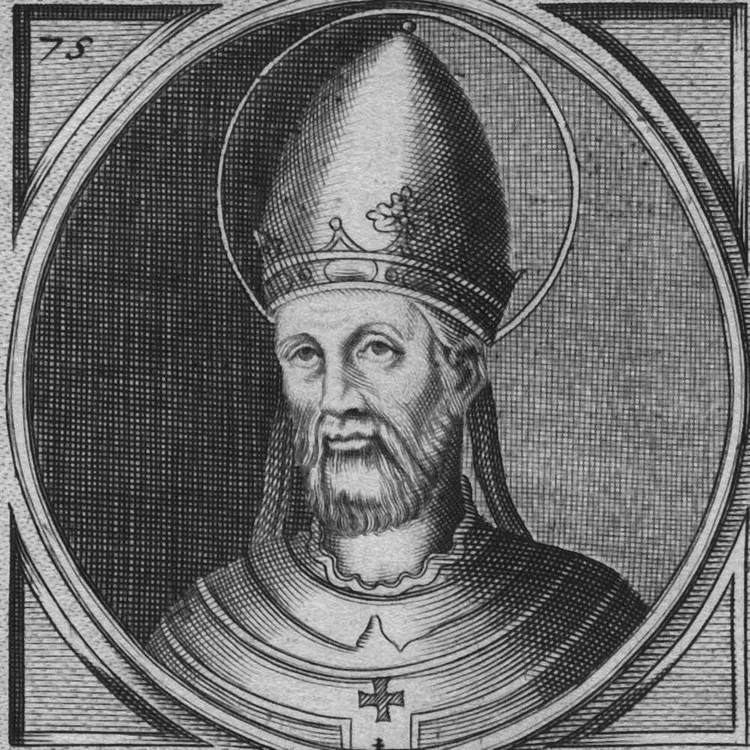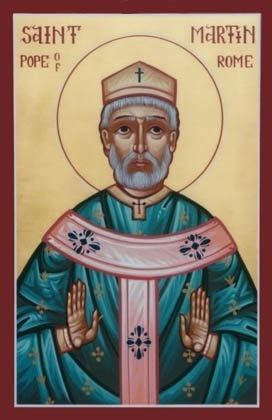Papacy began 21 July 649 Papacy ended 16 September 655 Posthumous style Saint | Name Pope I Term ended September 16, 655 AD | |
 | ||
Similar People Pope Theodore II, Pope Stephen VI, Pope John XVII, Pope Clement III, Pope Lucius II | ||
Pope martin i
Pope Martin I (Latin: Martinus I; 590 - 16 September 655) reigned from 21 July 649 to his death in 655. He succeeded Pope Theodore I on 5 July 649. He was the only pope during the Byzantine Papacy whose election was not approved by a iussio from Constantinople. Martin I was abducted by Emperor Constans II and died at Cherson. He is considered a saint and martyr by the Catholic Church and the Eastern Orthodox Church.
Contents
- Pope martin i
- Pope Martin I Wikipedia audio article
- Apokrisiariat
- Papacy 649653
- Abduction and exile 653655
- Place in the calendar of saints
- References

Pope Martin I | Wikipedia audio article
Apokrisiariat

He was born near Todi, Umbria, in the place now named after him (Pian di San Martino). According to his biographer Theodore, Martin was of noble birth, of commanding intelligence, and of great charity to the poor. Piazza states that he belonged to the order of St. Basil. He had acted as papal apocrisiarius or legate at Constantinople, and was held in high repute for his learning and virtue.

Martin I was the last Constantinopolitan apocrisiarius to be elected pope. Other envoys under the title nuncio have been elected since then, like Pius XII.
Papacy (649–653)

At that time Constantinople was the capital of the Byzantine empire and the patriarch of Constantinople was the most influential Church leader in the eastern Christian world. After his election, Martin had himself consecrated without waiting for the imperial confirmation. One of his first official acts was to summon the Lateran Council of 649 to deal with the Monothelites, whom the Church considered heretical. The Council met in the church of St. John Lateran. It was attended by 105 bishops (chiefly from Italy, Sicily, and Sardinia, with a few from Africa and other quarters), held five sessions or secretarii from 5 October to 31 October 649, and in twenty canons condemned Monothelitism, its authors, and the writings by which Monothelitism had been promulgated. In this condemnation were included not only the Ecthesis (the exposition of faith of the Patriarch Sergius for which the emperor Heraclius had stood sponsor), but also the typus of Paul, the successor of Sergius, which had the support of the reigning Emperor (Constans II).
Abduction and exile (653–655)
Martin was very energetic in publishing the decrees of the Lateran Council of 649 in an encyclical, and Constans replied by enjoining his exarch (governor) in Italy to arrest the pope should he persist in this line of conduct and send Martin as a prisoner from Rome to Constantinople. He was also accused by Constans of unauthorised contact and collaboration with the Muslims of the Rashidun Caliphate - allegations which he was unable to convince the infuriated imperial authorities to drop.
The arrest orders were found impossible to carry out for a considerable period of time, but at last Martin was arrested in the Lateran on 17 June 653 along with Maximus the Confessor. He was hurried out of Rome and conveyed first to Naxos, Greece, and subsequently to Constantinople, where he arrived on 17 September 653. He was saved from execution by the pleas of Paul, patriarch of Constantinople, who was himself gravely ill. After suffering an exhausting imprisonment and many alleged public indignities, he was ultimately banished to Chersonesus (present day Crimea region), where he arrived on 15 May 655 and died on 16 September of that year.
Place in the calendar of saints
Since the 1969 revision of the General Roman Calendar, the memorial of Saint Martin I, which earlier versions of the calendar place on 12 November, is on 13 April, the anniversary of his death.
